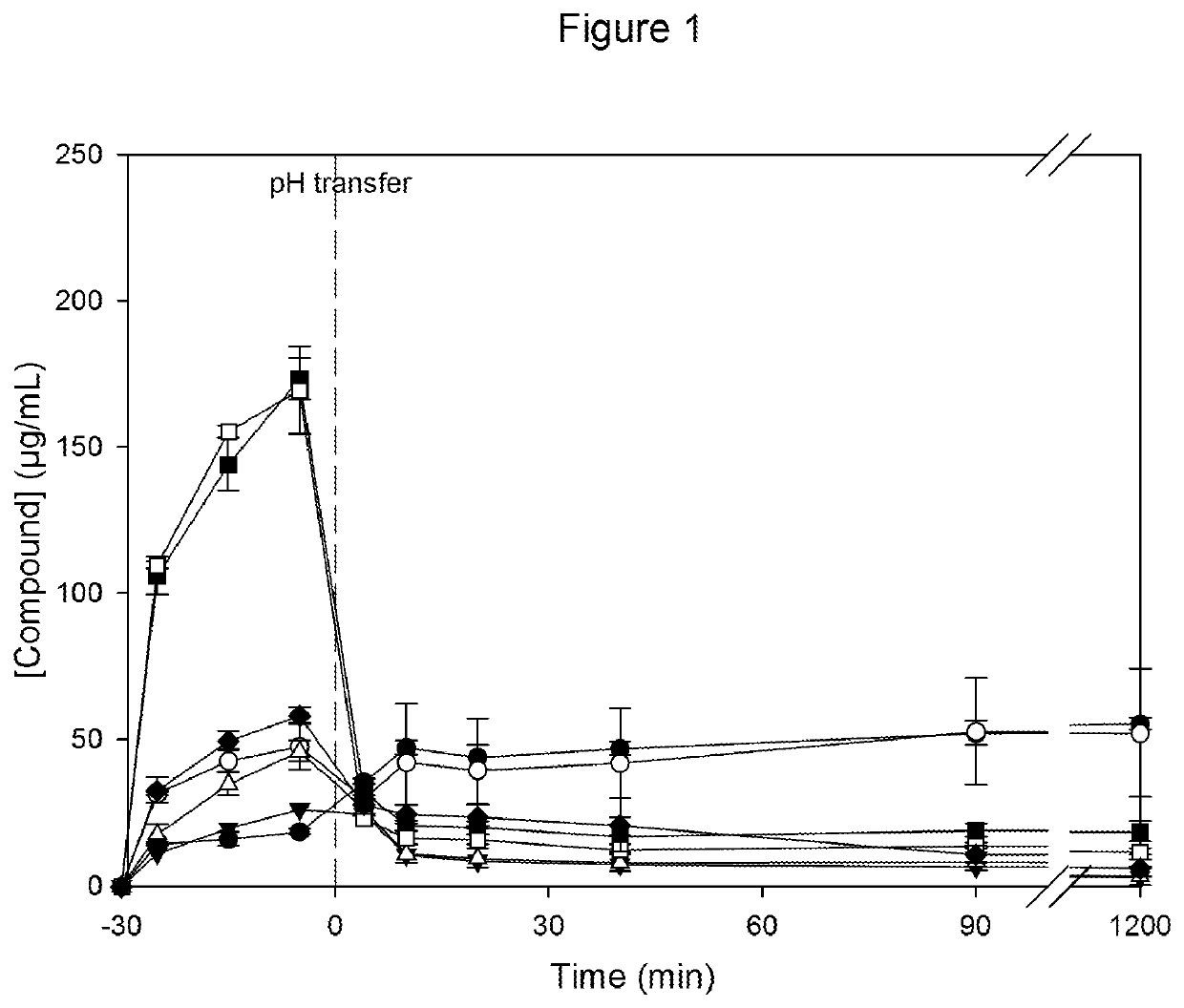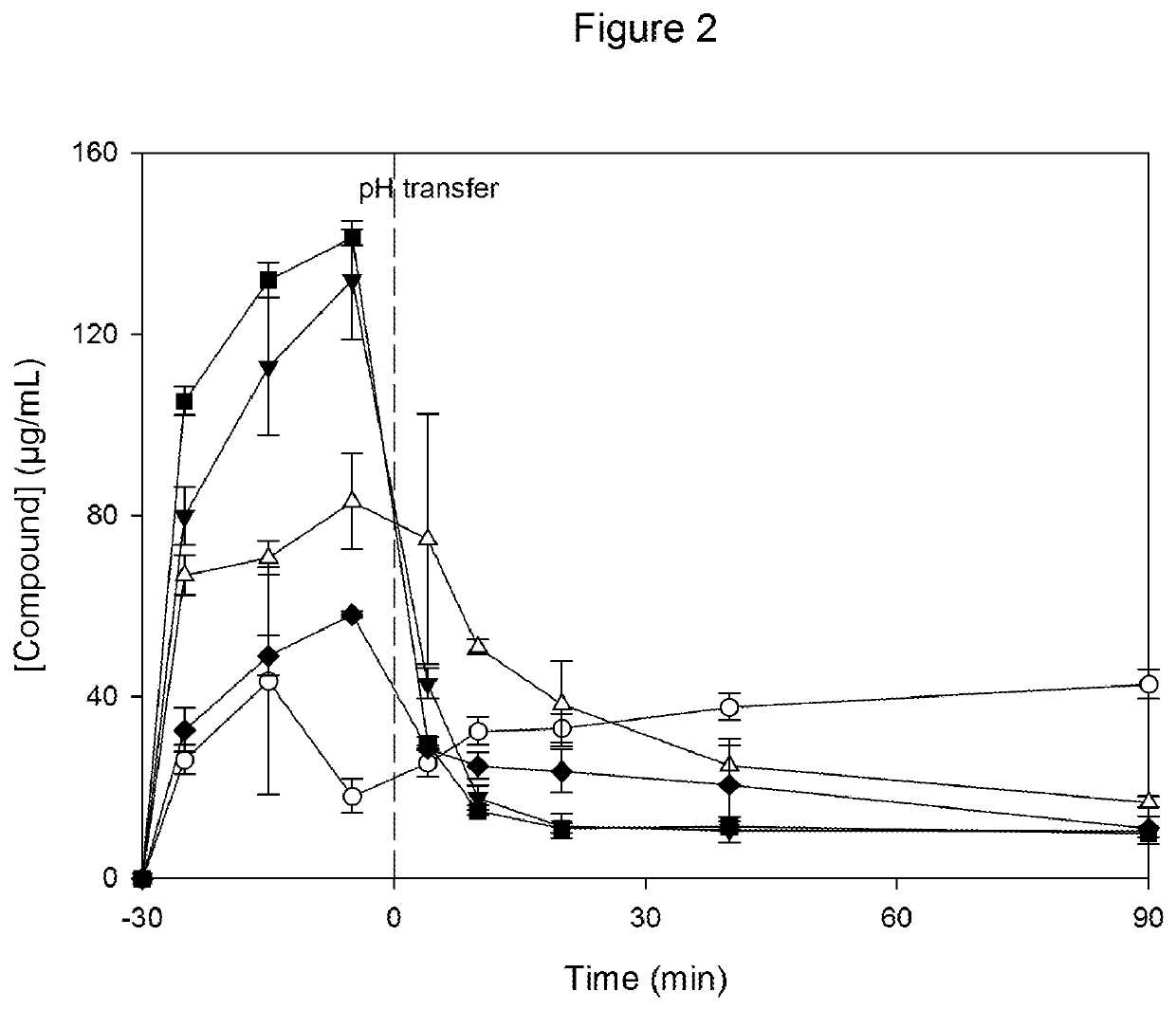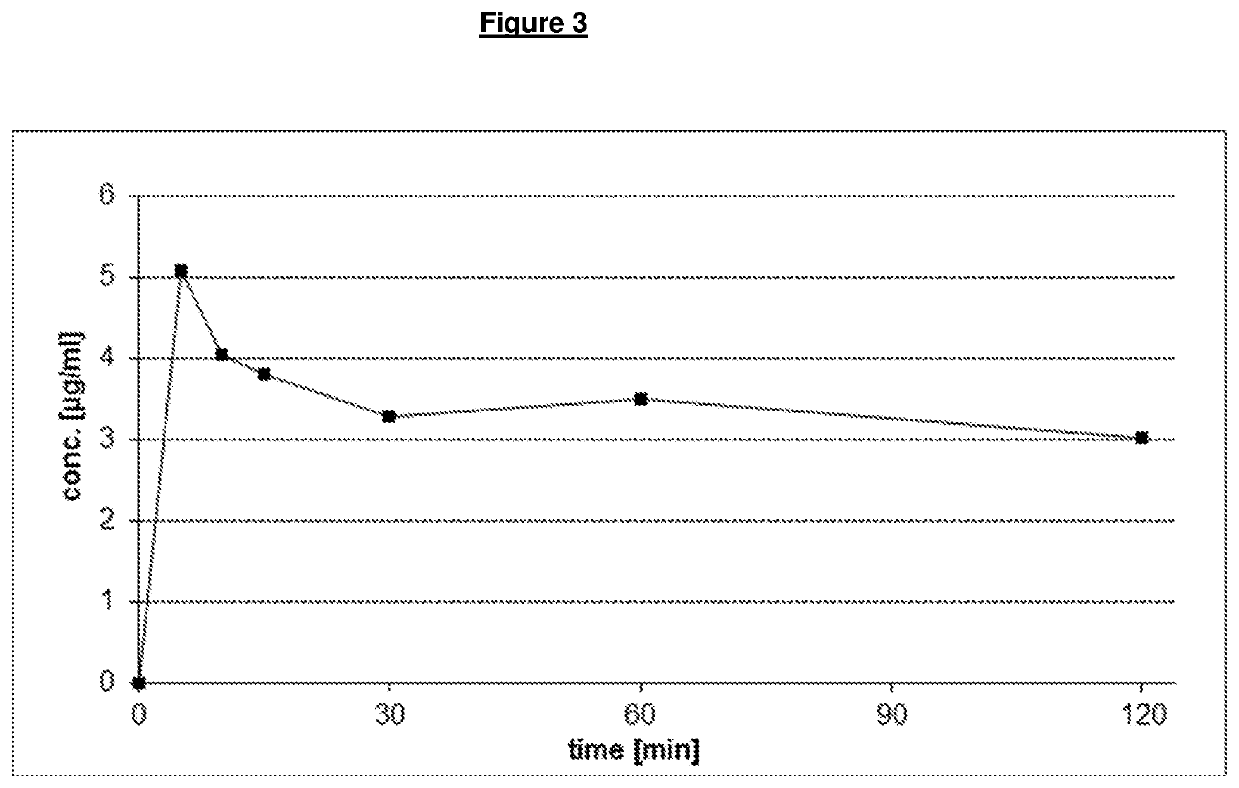Pharmaceutical preparation
a technology of amorphous compound and a pharmaceutical preparation, which is applied in the direction of capsule delivery, drug composition, organic active ingredients, etc., can solve the problems of difficult preparation of a non-stabilized pure amorphous compound, difficult to achieve the bioavailability of the pharmaceutical preparation that is necessary for the therapeutic effect, and unstable amorphous state of the compound
- Summary
- Abstract
- Description
- Claims
- Application Information
AI Technical Summary
Benefits of technology
Problems solved by technology
Method used
Image
Examples
example 1
[0133]Solid dispersions comprising either 10 or 20% (w / w) Compound and either 90 or 80% (w / w) polymeric matrix are prepared by spray drying using a custom-built lab-scale spray dryer. The polymers used are: cellulose acetate phthalate (CAP), Eudragit® L100, HPMCAS-L and HPMCAS-M. 10 or 20 g solids are dissolved in a mixture of methylene chloride / methanol 80 / 20 (w / w) to a solid content of 2.5 or 5.0% (w / w) and spray dried using the following conditions:
[0134]Atomization: pressurized nozzle with 150 psi atomizing pressure; Drying gas flow rate: 500 g / min; Liquid feed rate: 40 g / min; Inlet temperature: 105° C.; Outlet temperature: 40° C.; Secondary drying: vacuum desiccation for 2-4 days.
[0135]Dissolution tests are run for all of the above samples, using the following test conditions: Spray dried powders are dispersed to 200 μg Compound per mL in 0.01 M HCl at 37° C. (time point −30 min). 30 minutes after dispersion, a concentrated solution of simulated intestinal fluid (SIF; for detai...
example 2
[0139]Further experiments are carried out on the preferred CAP based solid dispersions using the same equipment as in Example 1. Solid dispersions comprising either 15, 18, 20, 25 or 30% (w / w) Compound and either 85, 82, 80, 75, 70% (w / w) CAP are prepared by spray drying. The solids are dissolved in a mixture of methylene chloride / methanol 90 / 10 (w / w) and spray dried using the conditions described in Example 1.
[0140]The resulting dispersions have glass transition temperatures between 146-149° C. at <5% relative humidity, and between 80-84° C. at 75% relative humidity. X-ray diffractometric analysis of the solid dispersions in CAP show no evidence of crystalline material independent of the drug load. The achieved supersaturation is comparable for all drug loads and similar to the CAP solid dispersion prototypes shown in Example 1.
example 3
[0141]Further process optimization is performed using a pilot scale commercial spray dryer (GEA Niro PSD-1). Two individual batches of solid dispersions comprising 20% (w / w) Compound and 80% (w / w) CAP are prepared by spray drying. 3000 g of solids are dissolved in a mixture of methylene chloride / methanol 90 / 10 (w / w) to a solid content of 3.9% (w / w) and spray dried using the following conditions:
[0142]Atomization: pressurized nozzle with 450 psi atomizing pressure; Drying gas flow rate: 1850 g / min; Liquid feed rate: 210 g / min; Inlet temperature: 95° C.; Outlet temperature: 35° C.; Secondary drying: tray drying at 40° C. / 15% relative humidity for 18 hours, or tray drying at 40° C. / 15% relative humidity for 13 hours followed by 2 hours at 40° C. / 30% relative humidity.
[0143]The spray drying yield (before secondary drying) is between 99-101%. The batch dried only at 15% relative humidity has a residual content of methylene chloride of 100 ppm, and 10 / d50 / d90).
PUM
| Property | Measurement | Unit |
|---|---|---|
| mean particle size | aaaaa | aaaaa |
| particle size | aaaaa | aaaaa |
| mean particle size | aaaaa | aaaaa |
Abstract
Description
Claims
Application Information
 Login to View More
Login to View More - R&D
- Intellectual Property
- Life Sciences
- Materials
- Tech Scout
- Unparalleled Data Quality
- Higher Quality Content
- 60% Fewer Hallucinations
Browse by: Latest US Patents, China's latest patents, Technical Efficacy Thesaurus, Application Domain, Technology Topic, Popular Technical Reports.
© 2025 PatSnap. All rights reserved.Legal|Privacy policy|Modern Slavery Act Transparency Statement|Sitemap|About US| Contact US: help@patsnap.com



